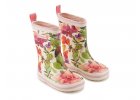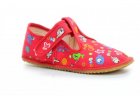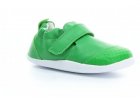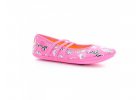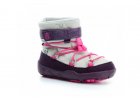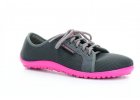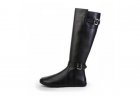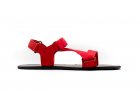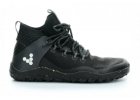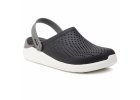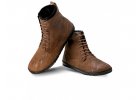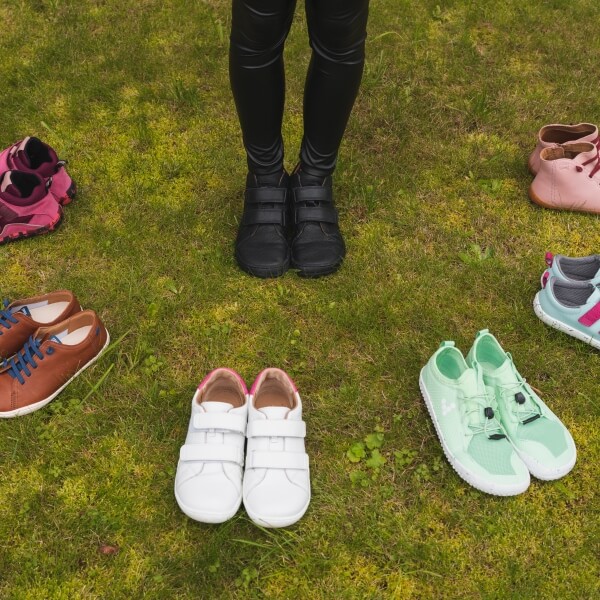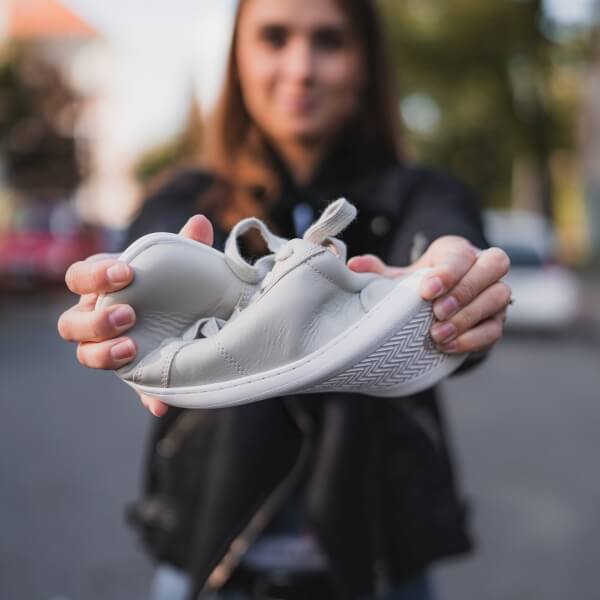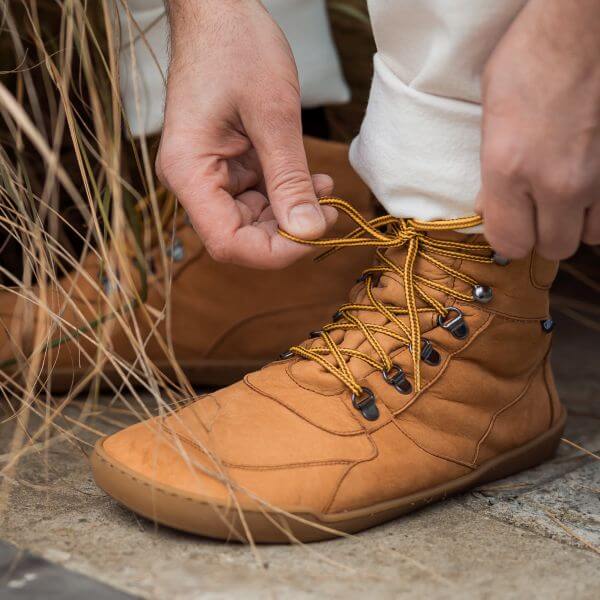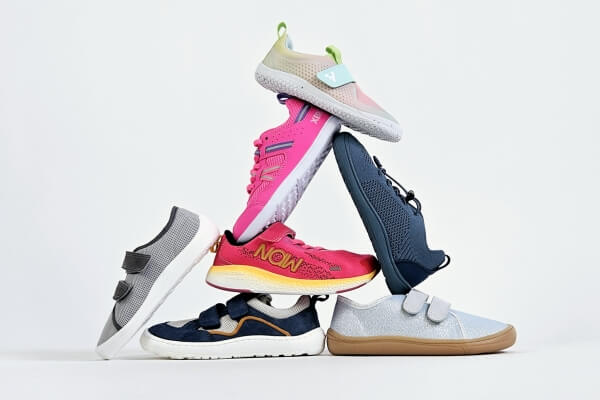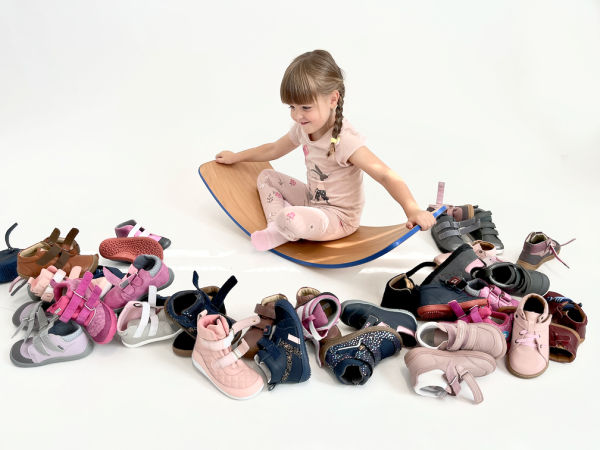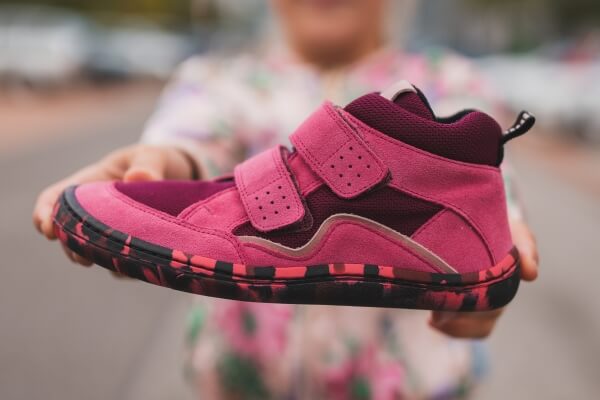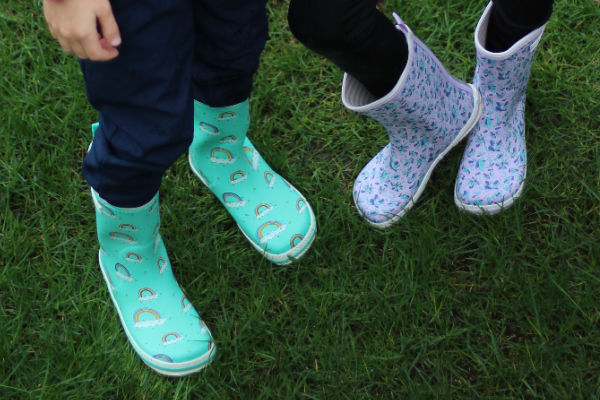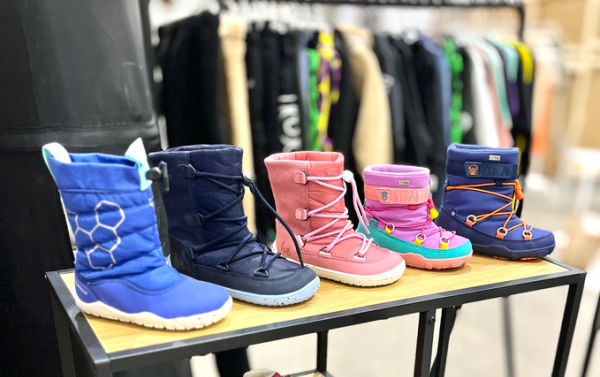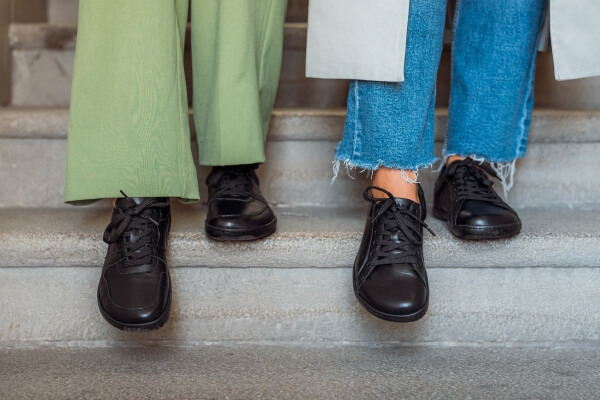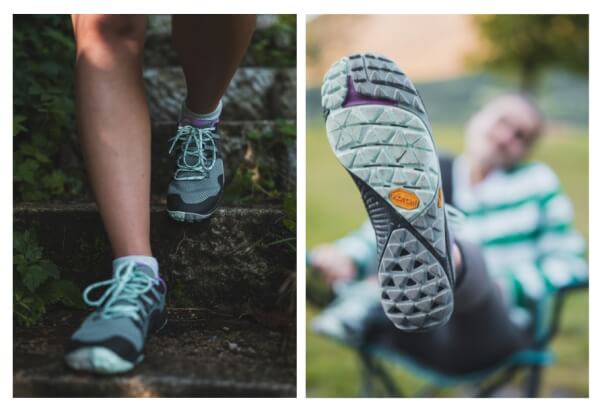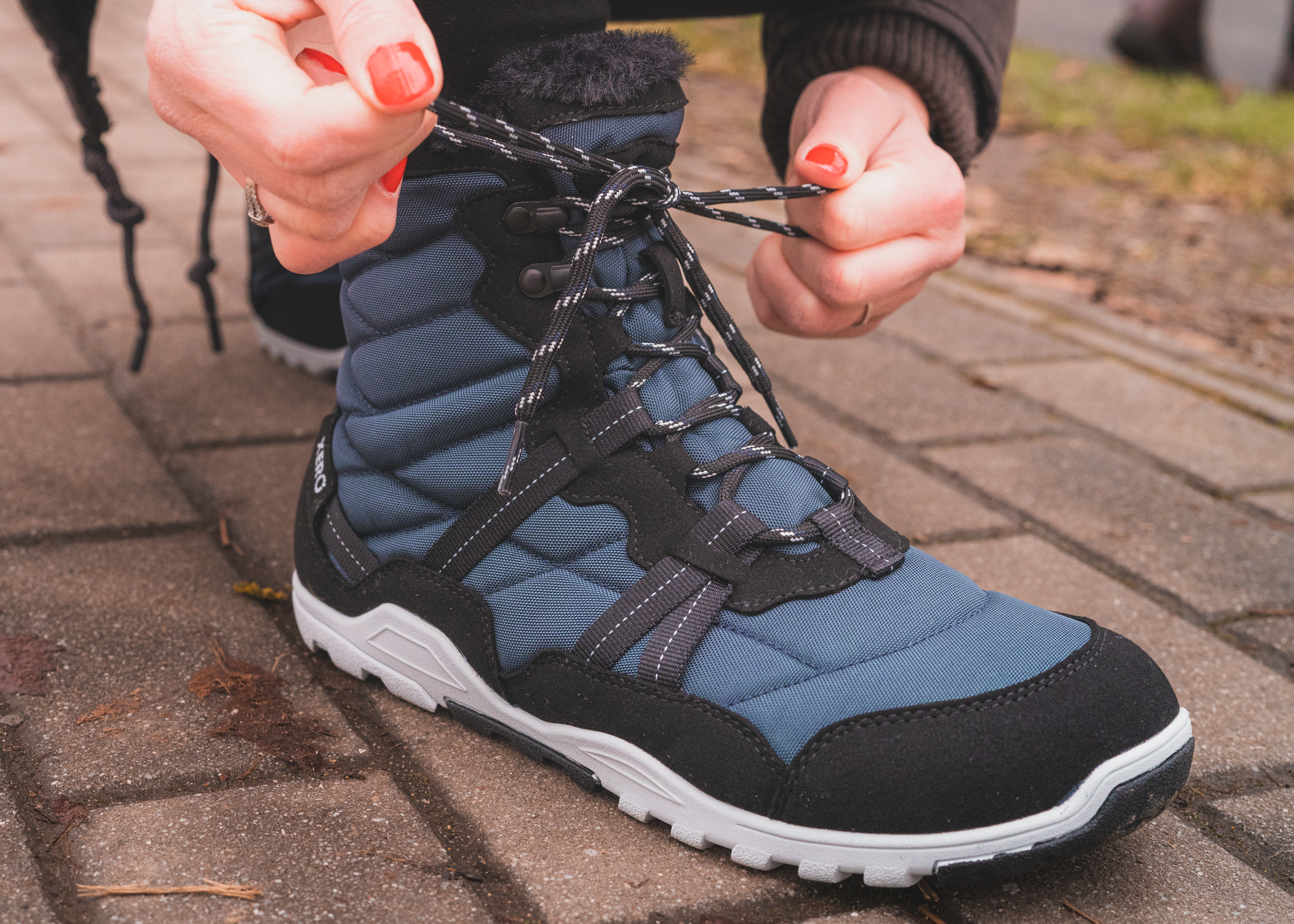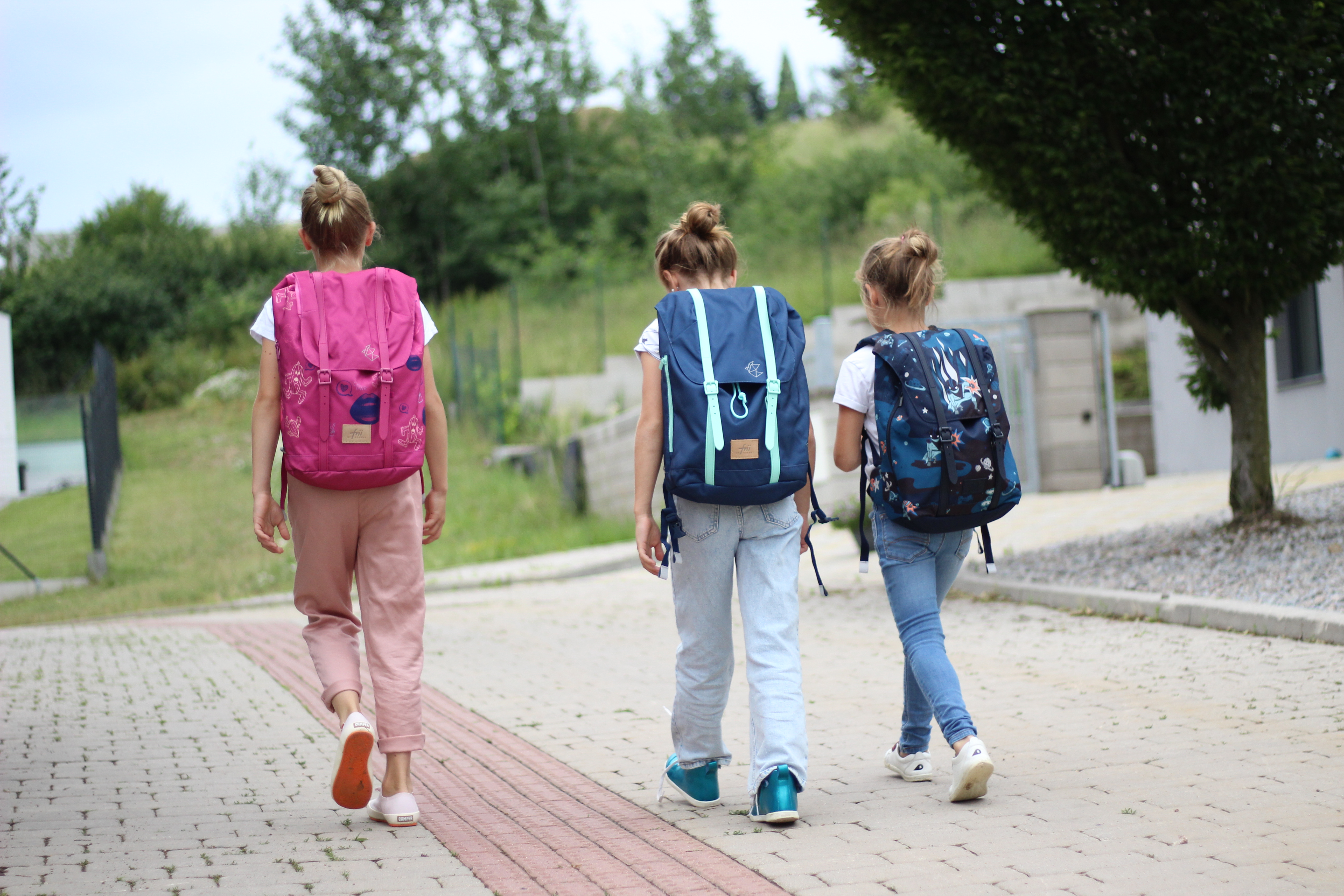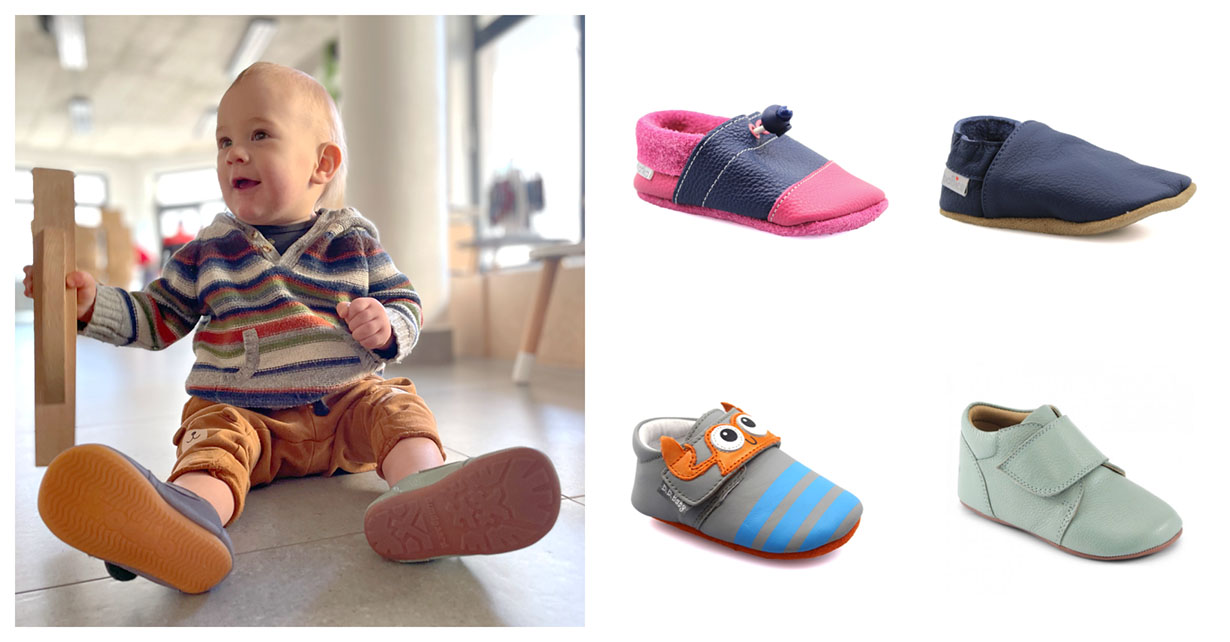The arch of the foot is similar to the arch seen in architecture. It is arranged in an arc and weighted from above. As part of our Barefoot Academy, we present a detailed article on how it works.
The content of the article
- What is the foot arch
- What is the longitudinal and transverse arch
- Children's foot arch
- How a collapsed arch is formed
- 11 exercises for the foot arch
- How ordinary shoes damage the arch
- Will barefoot shoes strengthen the arch of the foot?
- Final summary
What is the foot arch
The arch of the foot is a flexible unit composed of bones, joints, ligaments, and muscles. Its elements arch from one side of the foot to the other, hence the name. The foot arch is held together by the mutual pull of muscles and ligaments.
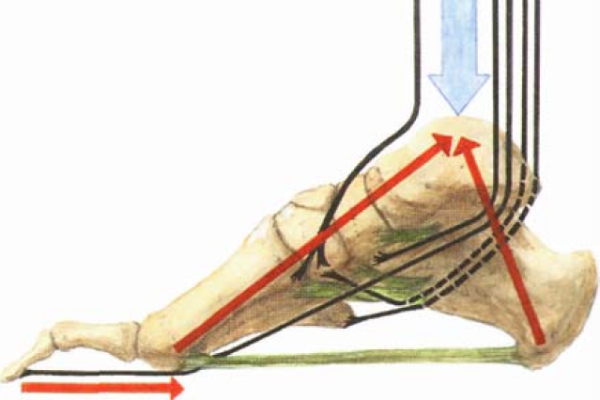
(Image source: Anatomie 1, Cihak)
The arch is located in the foot. It connects the three basic support points of the foot, namely the ball of the heel, the head of the first metatarsal (at the root of the big toe), and the head of the fifth metatarsal (at the root of the little toe). The transverse arch [T] forms an arch that connects the two heads, and the longitudinal arch [L] leads to the heel bone.
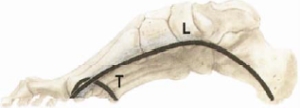 (Image source: Anatomie 1, Cihak)
(Image source: Anatomie 1, Cihak)
How the foot arch works
The foot arch serves mainly for support and movement. Its strength provides stability to support the weight of the whole body. At the same time, it remains flexible to move this weight in the form of walking.
In practice, the longitudinal arch works by gradually transferring the body weight along the arch towards the toes as you step on the heel bone while flattening slightly to cushion the impact. In addition, the transverse arch compensates for the balance caused by uneven terrain and aids stability.
What is the longitudinal and transverse arch
Longitudinal arch
The longitudinal arch consists of two arches that start close together at the base and fan out. The inner (medial) arch is higher and points towards the big toe, and the outer (lateral) arch is lower and points towards the little toe. "The longitudinal arch is related to the big toe. The big toe is the basic support of our foot, and we need to use it that way!" Matyas Kozma, a teacher of natural movement, encourages in his courses.
"The big toe in its natural position directly extends the first metacarpal. When we lean on it, it activates the longitudinal arch. It will arch, which puts the ankle in the right position and straightens the knee and hip. It also activates the pelvic floor and inner abdominal muscles and relaxes the lumbar and cervical spine. If the big toe rotates away from the other toes, the force is no longer transmitted to the longitudinal arch, and it stops working," he explains.
Transverse arch
The functioning of the transverse arch is determined by the outstretched toes, which, according to Matyas Kozma, is easier to understand by looking at the hand, which functions similarly to the foot [see photo]. When we push the fingers/toes together, the arch becomes smaller [centre]. Additionally, if we raise the fingers/toes (for example, by lifting the toe box of a shoe), the arch flattens completely until it disappears [right].“

"The transverse arch, those are prehensile toes! By switching to an upright gait, we've lost the prehensile big toe, so many people don't even think about trying to grasp something with their toes. However, it is by spreading the toes wide that the transverse arch is formed," he adds.
Children's foot arch
Children's arches do not fully form until around the age of three, so a missing arch at an earlier age is a normal condition. "It is sufficient to deal with ankle buckling from the age of two and leave the first steps with minimal restrictions," recommends physiotherapist Romana Cihlarova. In cooperation with her, we have developed a comprehensive overview of natural foot development.
How a collapsed arch is formed
A sunken arch represents a deformity of the foot when the longitudinal or transverse arch (or both) collapses, completely disappears, and a flat foot is formed. We discuss what flat feet are in more detail in a separate article.
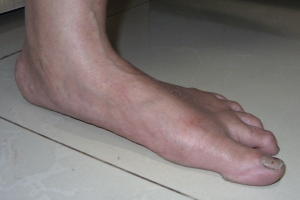 (Image source: Wikipedia.org)
(Image source: Wikipedia.org)
The most common cause of a collapsed arch is poor footwear. Genetics and hypermobility (loose ligaments) also play a role. Flat feet are more common for obese or pregnant people and people with jobs where they stand most of the time (e.g. hairdressers). Poor walking style (long, fast strides, heel stamping) or injuries can also affect the arch condition.
How to identify flat feet?
The simplest way to check the arch is to observe the imprint of a bare foot in the sand or a wet footprint on the floor. The width of the print in the middle of the foot is about half its maximum width in a healthy foot [shown in red], while in a flat foot [right], the footprint remains about the same width from heel to toe.
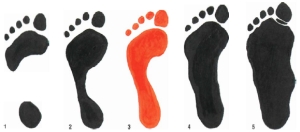 (Image source: Anatomie 1, Cihak)
(Image source: Anatomie 1, Cihak)
A footprint can be distorted in domestic conditions, so a professional check is more conclusive. "We can use a variety of methods to examine the soles of the feet. For example, printing the foot in memory foam, imprinting the foot on paper (podograph), looking at the foot through a glass plate (podoscope), or examination using a pressure platform," explains physiotherapist Eva Prochazkova.
Arch pain
Pain perception is one of the signals of a collapsed arch. In the first stage, there is a mere fatigue of the feet from excessive load. This then develops into mild foot pain, which may not yet be too restrictive. If not intervened in time, it can increase in intensity and make prolonged exertion or more intense physical activities (sports) impossible. In more severe disabilities, stiffness, swelling, cramps, or tingling in the toes are also added.
A collapsed arch also negatively affects other parts of the musculoskeletal system. There is a pain in the ankles, varicose veins, and a feeling of heavy calves. The pain is transferred from the feet to the knees, hips, and spine. Back pain is one of the frequent consequences of the fact that the arch of both legs does not collapse at the same rate. Accompanying phenomena of a sunken arch include hallux valgus, heel spurs, hammertoes or Achilles tendonitis.
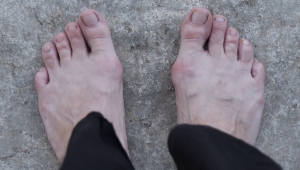
Treatment of the arch
Each foot is individual, and there are three grades of flatfoot (from lightest to heaviest). Therefore, we recommend that you always consult experts (physiotherapists, orthopaedists, ...) about the condition of your feet and their specific treatment. If you have the feeling that your child's foot is not working naturally, see a specialist immediately. Although their arches do not form until later, they develop habits of movement from an early age.
You can support the correct function of the foot arch from the comfort of your home. Sufficient stretching and blood circulation of the foot, strengthening exercises, but also sufficient rest can help with treatment. Particularly when there is a significant load on the feet, a relaxation phase should always follow, the effects of which are multiplied by a healthy lifestyle and good quality sleep.
The arch and orthopaedic insoles
Orthopaedic inserts are one of the most frequently prescribed forms of addressing a collapsed arch. The custom-fit insoles support the foot, improving the position of the limb and relieving pain. On the other hand, they are only a passive crutch, and poor foot stimulation again causes flat feet to develop. Similarly, insoles lose their effectiveness if worn in the wrong footwear, which further deepens the arch's sinking.
11 exercises for the foot arch
Exercising the arch helps keep it active and functional. It serves for the prevention and recovery of milder forms of flatfoot. For inspiration, here are exercises you can add to your regular regime.
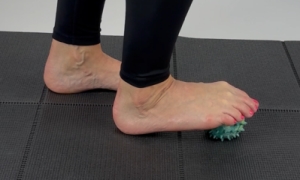 Stretching exercises
Stretching exercises
- Standing with your arms extended, lean against a wall with one leg forward (bent) and the other back (extended), toes towards the wall. Lean forward slightly until you feel a stretch in the back of your calf. Hold for half a minute, then switch legs. Repeat for each leg twice.
- Go to all fours, knees on the floor below your hips, palms under your shoulders, keeping your back straight. Place toes on the ground and lift knees slightly. Try to keep the heels in the middle of the foot, this should be with the hip and knee on the same axis. Breathe into your belly and push your toes into the ground, then bring your knees back. Repeat five times for ten seconds.
- Now, in the same position as in the previous exercise, do not lift your knees, but move your pelvis backward over your heels and back again. Repeat ten times.
- Sitting with your legs bent, place your entire foot on the floor. With one hand, pull the big toe as far away from the other toes as possible, but at the same time, with the other hand, push the metatarsal bone back towards the other bones at the root of the big toe. Alternate feet.
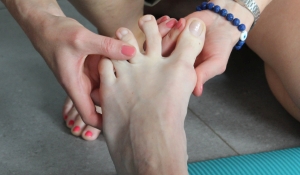
Massage exercises
-
Clench your right hand into a fist and use the knuckles to massage the sole of your left foot. Squeeze and stretch for at least half a minute, then switch sides.
-
Stand (or sit on a chair) with your feet touching the ground. Place a harder ball (e.g. golf ball) under the foot and press and roll it back and forth under the arch of the foot with moderate force for two minutes. Alternate both legs.
-
Place a soft to medium hard ball under your foot and step on it. Try different points on the foot.
-
Walk barefoot on uneven surfaces (sand, pebbles, grass) or try massage pads.
Coordination exercises
-
Use your toes to pick up all sorts of small objects, or you can also try tearing paper with both feet.
-
With your feet relaxed on the floor, start lifting your big toe off the floor, keeping your other toes flat. Next, put your big toe down and lift the other toes. Repeat ten times, doing two sets for each foot.
-
While standing, place a small ball between your big toes and lift. For at least two minutes, try to keep it from falling off by working together with both big toes.
How ordinary shoes damage the arch
The exercise will be in vain if you end up wearing arch-damaging shoes again. In particular, beware of hard shoes, shoes with a narrow toe, high heel, high sole or raised toe box.
Narrow toe box
In shoes with a narrow toe box, the toes (especially the big toe) do not have enough room to fan out and get proper support. When shoes don't respect the anatomical shape of the foot, the big toe is pushed in and pressed against the other toes. The same goes for the little toe on the other side, both of which can lead to toe deformities.
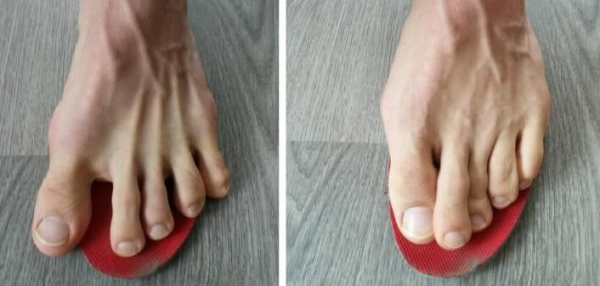
Raised heel
Heeled shoes shift the body's centre of gravity forward. The joints and the hip are overloaded, and the transverse arch is weakened. The toes are pressed against the end of the shoe, and deformities can occur. The ankle buckles, the knee wobbles, the foot rotates at the hip, the pelvis tilts forward, and the whole body is deflected from its natural position. The higher the heel, the worse, but even a slight tilt can cause problems.
Raised toe box
Similarly, the raised toe does not work. This shifts the weight back to the heels, so the body loses support in the toes. Blisters develop in the heel area, and movement patterns change. The flexed legs overload the knee ligaments and menisci, the abdomen loosens and bulges, the lumbar spine is strained, and there is a risk of disc damage. Even worse is the combination of raised heels and toes.
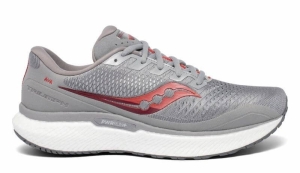
Sturdy shoes
Sturdy shoes with non-flexible soles hold their shape as you walk. Instead of a gradual swing from heel to toe, the foot falls flat and slides in the shoe and there is a risk of the toe being deformed against the hard walls of the shoe. In a rigid shoe, the foot remains fixed and the load is transferred to the ankle or, in the case of high shoes, the knee. The foot loses sensitivity and cannot react flexibly to small irregularities in the surface.
High sole
A high sole is not necessarily a complication if it is flexible enough to keep the foot flat on the ground. However, it does lose feedback from the ground and reduces stimulation of the sole. The arch becomes passively lazy and gradually weakens, especially in shoes where cushioning is provided by a functional sole instead of the arch.
Will barefoot shoes strengthen the arch of the foot?
There are also arch-strengthening shoes in which the foot can function naturally. These are flexible shoes with a wide toe box and flat, thin sole, for which the general term barefoot shoes has taken hold. "The most important thing is to give the foot room to move freely. That's why barefoot shoes can be more effective than orthopaedic insoles that passively support the foot," advises physiotherapist Lukas Klimpera.
Wide toe box
The wide toe box allows for a fan-like spreading of the toes and stable support, thus strengthening the longitudinal and transverse arches. A healthily shaped shoe respects the natural shape of the human foot, not the other way around.
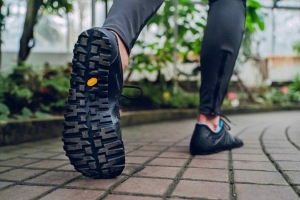 (Image source: Ahinsa shoes)
(Image source: Ahinsa shoes)
Flat sole
The shoe's flat sole (zero drop) keeps the body's centre of gravity in an optimal position, distributing weight evenly across the foot between the three points of support (and the toes), keeping the arches arched actively.
Soft shoes
The all-around flexible sole (and overall soft shoe) allows the foot to gradually unwind the tread as you walk. The foot is genetically adapted to walking barefoot on uneven terrain, where it constantly reacts to changes. Soft footwear keeps this ability active.
Slim sole
The thin sole brings the bottom of the foot closer to the ground for better perception of the surface. Small surface irregularities massage the foot, and the arches actively work to cushion the impact of the foot on the terrain.
Final summary
The arch of the foot is used for support and movement and is divided into longitudinal and transverse arches. Its correct arching and functionality depend primarily on the position of the toes. When the arch collapses, especially due to poor footwear, it causes many health complications and pain throughout the body. A collapsed arch can be identified by the imprint of the foot, persistent pain, or by a professional examination. In young children, the arch does not form until around the age of three.
Narrow heel and toe box, high sole, raised toe box, and general stiffness are particularly harmful to the arch. Barefoot shoes, on the other hand, with their wide toe box and flat, low, and flexible sole, allow the arch to work and strengthen naturally. Our customer service team will be more than happy to help you choose the footwear that is right for you.
If your doctor recommends orthopaedic insoles, it is better to wear them in healthy shoes. For us (apart from barefoot shoes), we recommend walking barefoot as much as possible (where the environment allows it and the medical history does not prohibit it), regular foot exercises, gradual strengthening of the arch by active movement, and sufficient relaxation.



